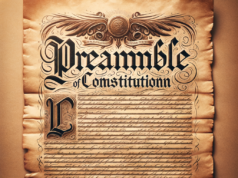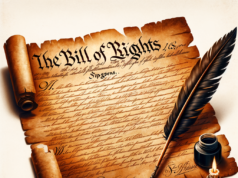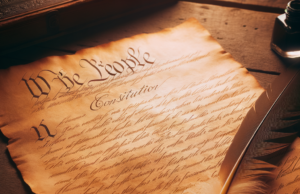
The Virginia Plan: A Revolutionary Proposal for a New Nation
The Virginia Plan was one of the most important and influential documents ever produced in the history of American politics. It was initially created by James Madison, widely regarded as the Father of the Constitution, along with Virginia Governor, Edmund Randolph. The Virginia Plan, also known as the Randolph Plan, was proposed at the Constitutional Convention in 1787 as an alternative to the existing Articles of Confederation. The Virginia Plan laid the foundation for the current system of government in the United States, and it is an essential part of American history.
The Need for a New Constitution
After the American Revolution, the States faced many difficulties. The Articles of Confederation that they had initially drafted were inadequate to address the needs of the nation. It became quite apparent that a more effective constitution was needed to bring about order and stability in the country. The issues the States faced were numerous: trade disputes, economic struggles, and a lack of a unified government system. It was essential that these issues were addressed if the United States were to grow, and thrive as a new nation.
Early Attempts at Constitutional Reform
Before the Virginia Plan was proposed, several efforts were made to provide a remedy to the inadequacies of the Articles of Confederation. One of these was the Annapolis Convention of 1786, which was a conference of five states to discuss trade and financial issues. The conference was attended by Alexander Hamilton and James Madison, who proposed a new Constitutional Convention to address these problems. The idea received widespread support, and it was decided that the convention would be held in Philadelphia in 1787.
The Virginia Plan Takes Shape
James Madison saw the Constitutional Convention as an opportunity to create a new government system that would address the issues that were facing the States. The Virginia Plan was drafted, and it sought to create a new system of government that would be modeled on the three branches of the British government; the Executive, Legislative, and Judicial branches.
The Virginia Plan proposed a federal government consisting of two houses of Congress, where the lower house was to be elected by the people, and the upper house was to be elected by the lower house. The number of representatives allocated to each State would be based on the population of that state. This was based on Madison’s belief that the larger states should have more representatives in Congress because they contributed more to the nation’s economy.
The Virginia Plan also proposed a single executive branch, led by a President, who was to be elected by Congress. The President’s duties included executing laws, have control over foreign policy, and would have the authority to veto any acts of Congress.
The Virginia Plan was also notable for its suggestion of a judicial branch for interpreting laws. The decisions of this branch would be final and could not be appealed.
The Reception of the Virginia Plan
The Virginia Plan attracted support from the larger states, such as Virginia and Massachusetts, who were in favor of a strong central government. Smaller States, such as New Jersey, argued for equal representation for all states, which they believed would be fairer. They put forward their own plan, known as the New Jersey Plan, which favored equal representation in Congress for all States.
Compromise: The Connecticut Compromise or The Great Compromise
The delegates at the Constitutional Convention were eager to find a way to resolve the differences between the Virginia and New Jersey Plans. The Connecticut Compromise, also known as the Great Compromise, was proposed by delegates from Connecticut.
The Great Compromise called for a bicameral legislative body, with a House of Representatives, where each State’s representation was determined by population. This satisfied the large states’ position as they would be represented in proportion to their population. In the Senate, each State would have equal representation, thus satisfying the small States’ position. This compromise paved the way for the Constitution to be written and agreed upon.
The Impact of the Virginia Plan
The Virginia Plan was instrumental in shaping the United States’ current system of government. The document was forward-thinking and innovative and set the blueprint for a national government in the United States. The system it proposed has protected the rights of citizens and promoted the nation’s economic and political stability for over two centuries.
The Virginia Plan’s influence is seen in the U.S Constitution that was ultimately drafted and ratified. The Constitution gave rise to a strong central government that still operates today, ensuring national unity and guaranteed democracy.
Conclusion
The Virginia Plan was a defining moment in American history, and its influence can still be felt today. The plan provided a new and innovative direction that helped resolve the problematic issues the nation faced following the American Revolution. Its far-sighted ideas regarding the separation of powers and the balance of power between federal and State governments set the stage for America’s rise as a world power.
The Virginia Plan, along with the other founding documents, has shaped the American governmental system to be one of the most stable and prosperous in the world. It has provided strength and stability for the nation’s citizens for over two centuries and will continue to do so for centuries more.
The Constitutional Convention, also known as the Philadelphia Convention, was a conference that took place at Independence Hall in Philadelphia in 1787. As its name suggests, the Philadelphia Convention was a call to completely transform the previous legislative model set forth by the Articles of Confederation. Upon its creation in 1777, the authors of the Articles of Confederation were still reeling from the perceived injustices they had suffered under the monarchy of both King George II and King George III.
Considered by its critics to be a reactionary doctrine fueled by an overwhelming disdain towards any totalitarian ruling body, the Articles of Confederation removed all jurisdiction that the central government could possess over the individual 13 states of the Union. As a result, rather than operating as a republic under a single legislation, the 13 states operated as 13 individually-sovereign entities. Though the central government was afforded some power, each individual State-run legislature was permitted to establish any and all policies that would be carried out within State borders.
While the idea of an individually-sovereign State greatly appealed to the smaller states of the Union, the larger states quickly realized the innate flaws in the construct established by the Articles of Confederation. For example, the legislation of the central government could only pass new laws with the approval of at least 9 out of the 13 states of the Union. In addition, an amendment to any existing law could only take place under the condition of a unanimous approval on the part of all 13 states. As a result, larger states like New York and Virginia became concerned about the possibility of the 9 smaller states, in response to their respective inferior population and size, forming an ad-hoc alliance in which they would consolidate their respective votes in order to control the fate of every legislative hearing that took place on a national level.
In addition, should one State disapprove of an amendment that garnered the approval of the remaining 12 states, the amendment would not be passed. This created a forum in which the minority would be allowed to rule over the majority. In reaction to this, Virginia representative Edmund Rudolph, a delegate from Virginia, proposed the Virginia Plan, also known as the Large State plan, at the Philadelphia Convention.
The Virginia Plan was based on a bicameral legislative model inspired by a form of republicanism. The Virginia Plan proposed that Congress be comprised of 2 legislative entities: the Lower and Upper Houses. The Lower House would be elected commensurate to each State’s population and the Upper House would be elected by the Lower House.
A majority of the smaller states who participated in the Philadelphia Convention regarded the Virginia Plan as fundamentally biased towards the interests of the larger states. In addition, many smaller states viewed the Virginia Plan as a means to penalize them for their comparatively smaller populations than those of their larger counterparts.




